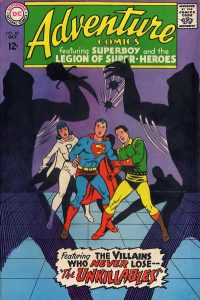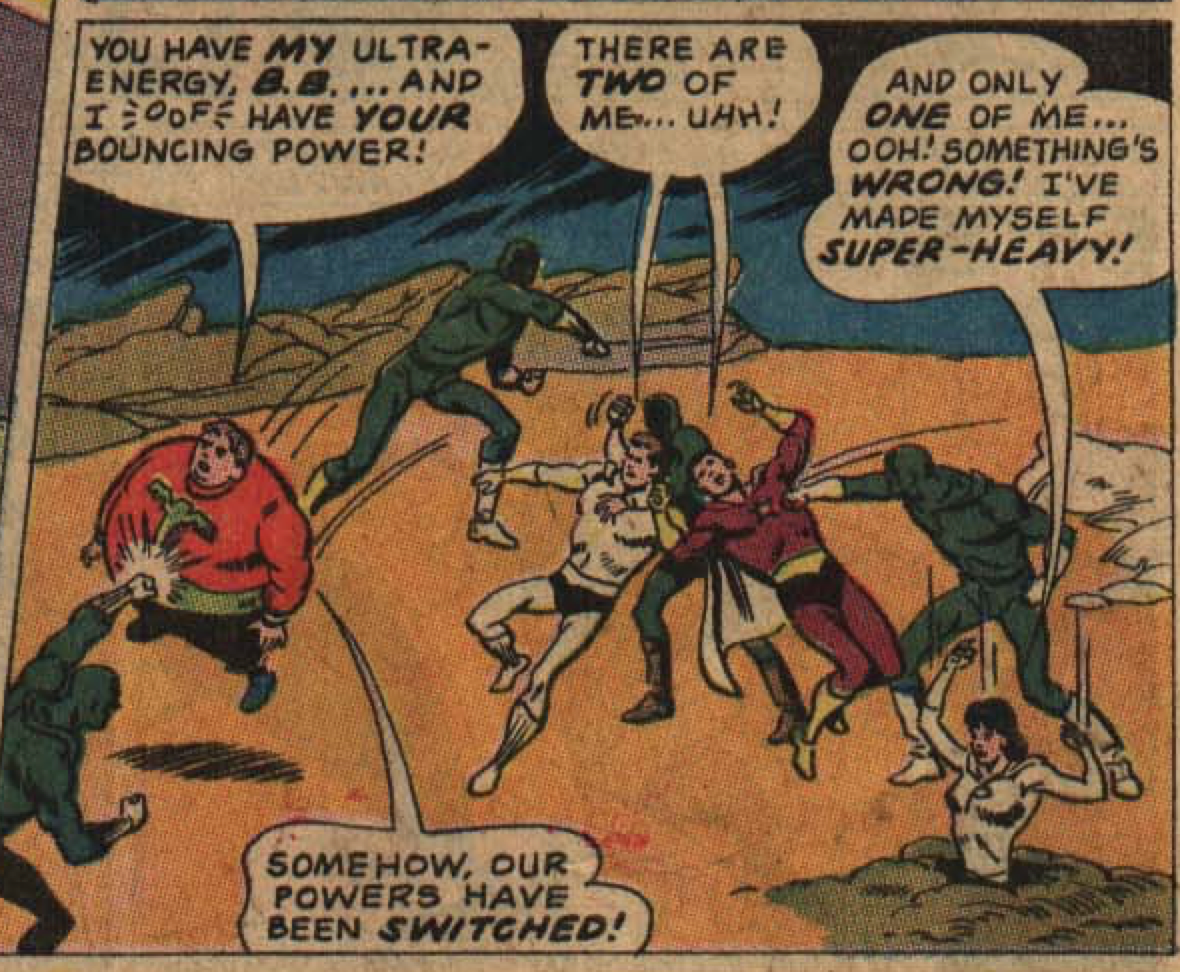 This one’s a little offbeat. As the story opens, we’re informed that the war with the Dominion has been going on for 20 years.
This one’s a little offbeat. As the story opens, we’re informed that the war with the Dominion has been going on for 20 years.
As I’ve been saying all too often lately, “Wait… what?”
You mean to tell us, Master Shooter, that Earth and the United Planets (because, as far as we can see, Earth is the United Planets) have been at war the entire time we’ve been reading these Legion adventures, and we never knew it? So Lyle, Gim, Dirk, Chuck, and the late, lamented Andrew were all born on a planet at war? It sure doesn’t feel like it!
But that may be part of the point. Jim Shooter was born in 1951, in the midst of the Korean War. That ended in July, 1953. But just over two years later, on November 1st, 1955, the United States went to war again. Jim Shooter was not yet two when peace broke out, and had just turned four when it ended again. His nation would be at war in Viet Nam until he was 23. (If you’re American and you want to get really depressed, here’s a Washington Post piece on how much of your life has been spent in war time.) (Yes, I’m being political, but I don’t believe I’m being in any way partisan.)
To a lot of Americans, the wars of Jim Shooter’s childhood (which were technically “police actions,” not declared wars) were a distant thing. They did not involve the kind of national mobilization or sacrifice that World War II had. if you or your family weren’t involved, you might have been able to pretend that all was well. I was too young for the specter of the draft to really hang over my head before Viet Nam ended, so to me it was, like Watergate, just something the adults talked about a lot. Not so Jim Shooter’s contemporaries. He was of the generation which was in danger of being called into combat in that war, and, even at 14, he might have wondered why more people weren’t more concerned, and why some of us were acting as though our Country were not at war. He wrote this story as protests against the war had been happening for two years, and they were about to ramp up in energy.
So it’s not surprising that he chose to say, “Oh, by the way, these Legion kids were all born during a war, and it’s been going on all of their lives.”
Shooter introduces the Dominators, who would cause a good deal of trouble for the Legion and the United Planets over the course of the coming decades. He sends the Legion on a mission to escort a group of Dominator ambassadors to Earth, taking them through the Tenth Dimension in order to make a long trip more quickly, by taking advantage of something like folded space.
They’re stalked and attacked by the Unkillables, hooded figures who want to kill the ambassadors and keep the war going. “We defy you to guess the identity of the Unkillables!” the splash page assures us, “All the clues are in your history book.” This is clearly a Weisinger gag—a mystery for which no clues are provided in the course of the story, the answer to which is revealed, deus ex machina, at the end, a la “The Eight Impossible Missions.” And the answer is a little disappointing to those of us who recall the “The Super-Villains of All Ages” story. It’s never really a high point for the Legion when they fight villains of the past. Although the fact that they’re descendants of the originals, manipulated to do the bidding of the deposed king of the Dominators, is a neat concept. And I did like the explanation of DNA and how one might manipulate it.
The story ends a bit abruptly, too, almost in mid-conversation. The use of “The Ultimate Weapon” seems a little Deus Ex Machina, and one is forced to ask if a weapon which just causes your opponents to switch powers, not lose them, is really “ultimate?” The Legionnaires, being highly trained, adapt pretty quickly to the fact that they now have each others’ powers, and they defeat the Unkillables. Adding to the rushed feel of this sequence is the fact that Star Boy splits into two people, but Duo Damsel is nowhere in sight. Phantom Girl was accidentally drawn in her place!  Indeed, DD shows up in only a half-dozen fairly static panels of this issue. One of the downsides of Legion stories is that it’s easy to short-change a character, or forget her almost entirely.
Indeed, DD shows up in only a half-dozen fairly static panels of this issue. One of the downsides of Legion stories is that it’s easy to short-change a character, or forget her almost entirely.
Jim Mooney picks up the art chores here, as there’s a couple-issue break in Curt Swan’s run on the Legion. Mooney is always easy to pick out, as the characters are especially wide-eyed (this stands out more on the boys) and smiling a good deal of the time. The hair on his characters is different too, like there’s a good deal of Aqua Net and Brylcreem in use. He tends to make the Legion look younger, if a bit more like 50’s sitcom stars.
Shooter’s one-issue ventures are rarely his best. He seemed to prefer the bigger canvas of the two-parter. Even in this, the second half could sometimes seem rushed. He was still telling some of the most memorable stories in all of Legion history, however, and going to high school at the same time.
Roll Call: Bouncing Boy, Duo Damsel, Ultra Boy, Phantom Girl, Karate Kid, Shrinking Violet, Superboy, Star Boy, Colossal Boy (listed as “Colossal Kid”), Brainiac 5, Light Lass.
